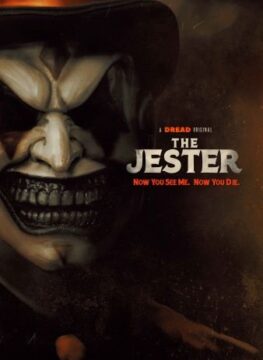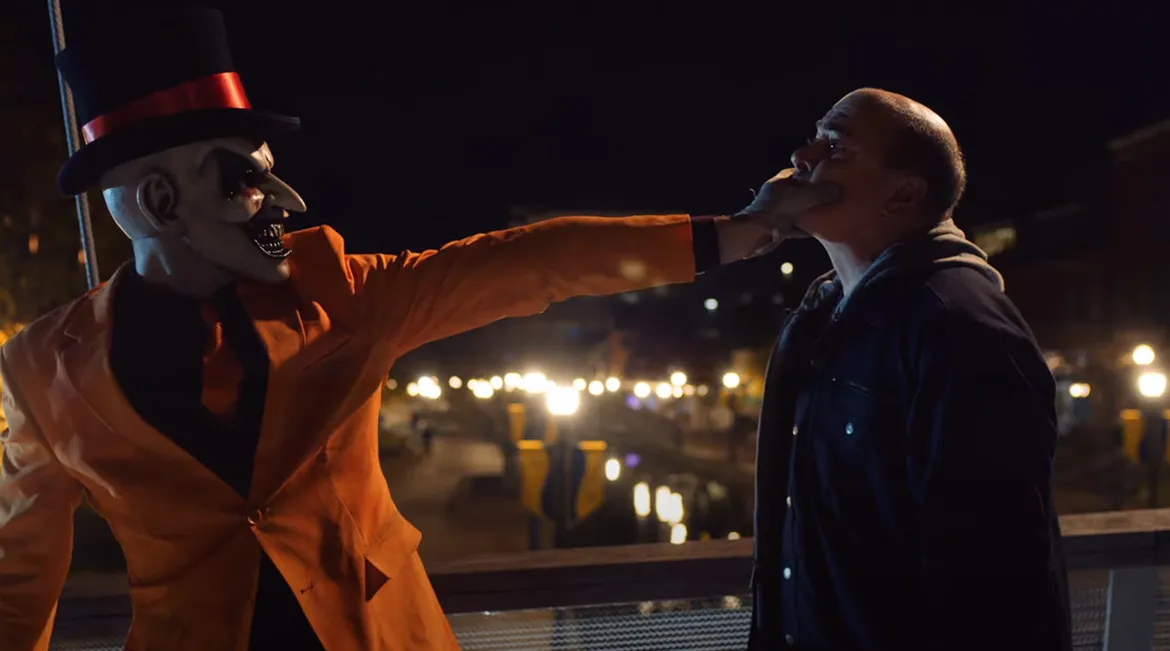
The Jester
(this review contains minor spoilers.)
Once upon a time, the early model for a career in filmmaking went something like this: “go to film school and impress the gatekeepers; submit to the festival circuit and hope the right people see your work; pray for a foothold contract with one of the big five Hollywood studios and, perhaps the hardest part, figure out how to stay relevant for as long as you can and hope to make some money along the way.”
Now, film-sharing platforms like YouTube provide amateur filmmakers with a place to showcase their work and—provided they have the right mix of talent and luck—an audience. The Jester is just such a project, garnering buzz in a 2016 short of the same name, and steadily building on that initial intrigue with 2018 and 2019 follow-ups.
I watched the three original shorts in preparation for the feature-length film and came away feeling that the hype was well-deserved. All three featured memorable moments, showcasing a wicked and interesting masked killer who was as good at capturing his victim’s attention as opening their throats. Each short showcased some smart filmmaking, good costumes, and (mostly) solid acting married with a story that was just enough to make a viewer want to see something lengthier. In particular, the Jester character himself gave an excellent physical performance, never uttering a word yet proving to be the greatest talent in front of the lens.
By the time I moved to the feature film, I was pleasantly primed to have an enjoyable experience that wouldn’t be Terrifier (something I feared up on first seeing the promotional material), and vaguely hopeful that I might be catching what could become a new indie horror darling.
The Jester Plot
Ultimately, the Jester character established in the shorts failed to grow into the longer runtime, as the feature-length film’s plot comes off feeling decidedly thin, even cliché at moments. The villain’s elastic-band mask and jaunty top hat had been replaced by bulkier covering that enveloped the entire head, removing some of his very human intrigue that was present in the shorts. Similarly, rather than trick his victims into their mortal ends, his powers became blunt-force supernatural acts: in one instance he teleports an apple into a character’s esophagus, causing it to rupture, and in another he seemingly uses mind control to make a man take his own life. There’s a bit more to this second example, but it’s regrettably flimsy, and unfortunately pivotal to the plot.
All this is to say that when scrutinized, the actual Jester character feels like a departure from the shorts that paved the way, and that feels like an unforgivable sin for an indie film with this legacy. The new Jester isn’t bad as villains go–he’s still very interesting–but I feel the shorts wouldn’t have been near as gripping if this was version we got then.
A Sad, Familiar Tale
The story starts on a strong note, with the opening scene taking us right back to the proof-of-concept. It’s a nighttime, suburban setting with the Jester and his soon-to-be victim opening with a friendly exchange which gives way to very real horror. The man speaks as though he knows the Jester, seems to hint there’s some sort of bargain or prior relationship between them. Their parlay reaches its conclusion, and the man calls his daughter to beg forgiveness for a shortcoming we don’t know the details of. She rejects his plea, and the Jester seemingly forces him to take his own life, drawing up his tie like a noose.
The next scene is the man’s funeral, and it’s here we get the setup for the remainder of the story: he has not one but two daughters, the first from the marriage he abandoned and the second from where he eventually settled. The half-sisters are distant, and the younger implores the elder to find love for her father, saying he always carried her picture and never stopped caring about her. It reaches for a deeply personal story of family relations and personal grief, but it all feels a touch too by-the-numbers.
Throughout these early scenes, the Jester appears in moments, dancing with glee over the grave and striking a vaguely Faustian note; he has a connection to those whose lives he has taken, and finds triumph in their despair. We also get the first few kills of peripheral characters, and at once recognize the Jester as a potentially insurmountable force: he appears and disappears at will (curiously, to minimal reaction from other characters) and is able to kill and move objects with a thought. It’s very clear that there will be no overpowering or outsmarting this supernatural killer; he does as he will with those he engages, and the only way to survive is likely through appeasement.
Orange Man Good
While I’ve already indicated that I didn’t love this film, I do think creator Colin Krawchuk has hit a really solid note with his leading man; The Jester is, at least on the surface, what we want in an all-powerful horror movie villain, and would be completely absurd if the script didn’t take him utterly seriously. The Jester is playful, reactive, attentive, and assessing those he encounters, punishing the aggressive and entertaining those who are amiable. While I strongly preferred his costume and methods in the shorts, he’s still a commanding presence here. He kills by manipulating matter, living and otherwise, and preys on the inability of strangers to resist a costumed man with an outstretched fan of cards. Everyone is curious, everyone is disarmed, presuming the costume as a bargain of safety, a guarantee that whatever transpires will be foremost, playful.
He’s a great villain in concept, though to stand up in a full-length film, he needs a backstory and has none. Without spoiling the reasoning at the close of the film, the Jester is a representation of an idea as well as an entity, but neither role are really articulated or supported, and so he just feels like a cool guy in a costume, great for making shorts but ultimately too shallow to match stride with other horror icons. Perhaps as a result of the YouTube legacy, the kills in The Jester are decidedly low gore, almost shockingly so, but they are a touch more creative than what you’ll typically find in films of this pedigree.
Final Thoughts
Cinematography, sets, costumes, acting, etc. are all decent, but the script is incredibly flat, relying on clichés and paint-by-number family drama to tell a story that audience members can yadda-yadda through while staring at their phones for much of the film and still have a pretty good idea of what is going on.
While a number of elements give audience members something to appreciate, the ultimate sum of the film’s parts leaves much to be desired. The Jester character fails to make the jump from film short to full-length feature, and while cool, remains decidedly underdeveloped. The script is tired territory, offering a simplistic, pantomime depiction of emotional trauma, depression, and family relations that neither offers a new angle or does a particularly effective job of presenting familiar ones.
Verdict: 5/10
Strengths
Solid costumes, sets, and acting
Eye-catching villain who is way more interesting than Art the Clown
Interesting, entertaining kills with minimal gore
Weaknesses
Shallow script, relying on formulaic tragedy to engender audience interest
Weirdly feels like it should be a film for gorehounds, but isn’t
Full-length film lacks the intrigue of the shorts
You can watch The Jester on Amazon, Vudu, or Apple streaming at the time of writing








